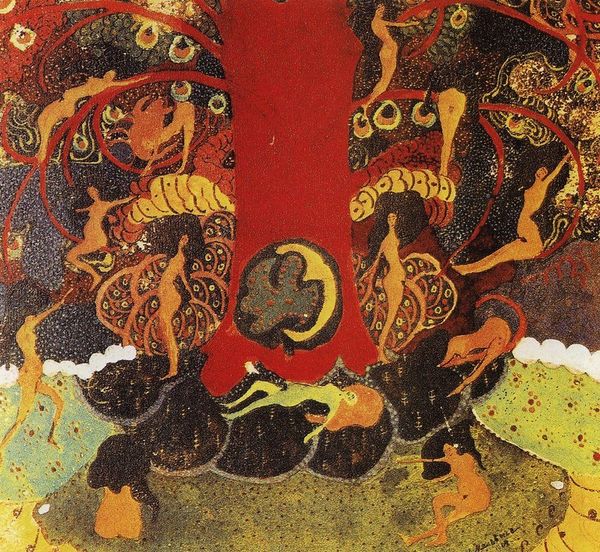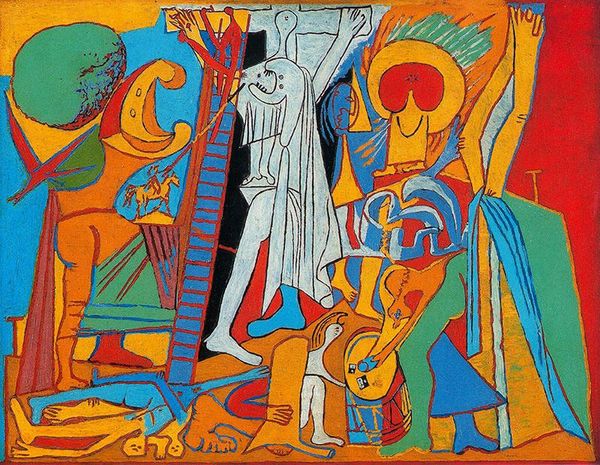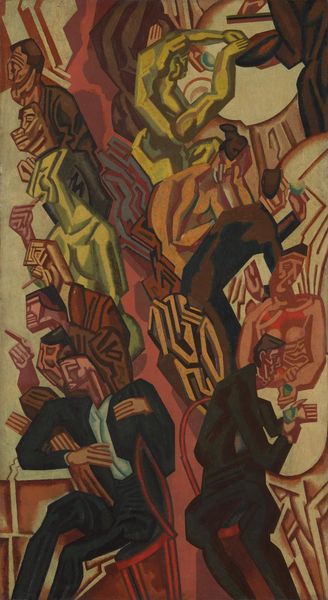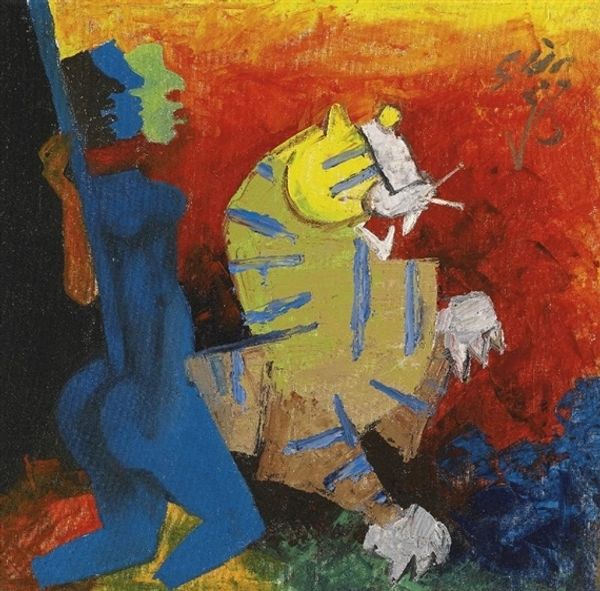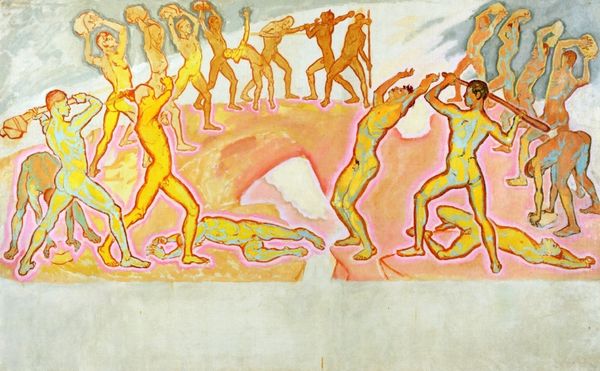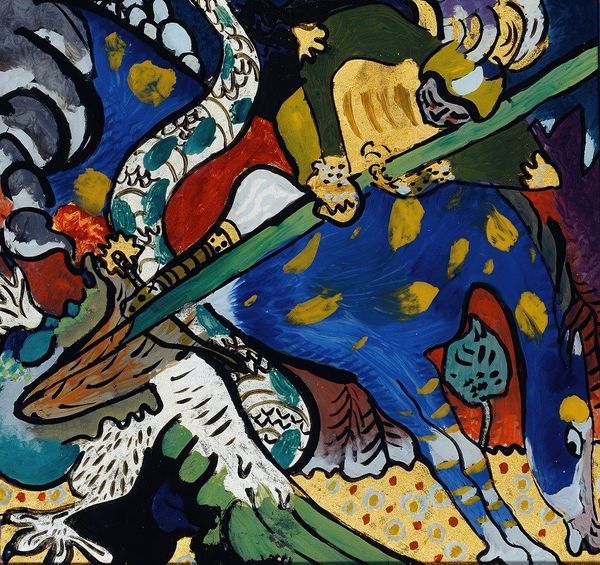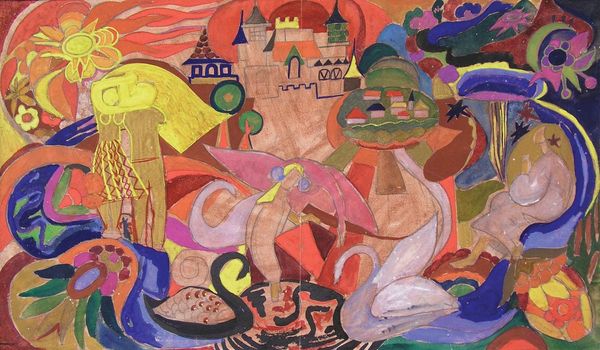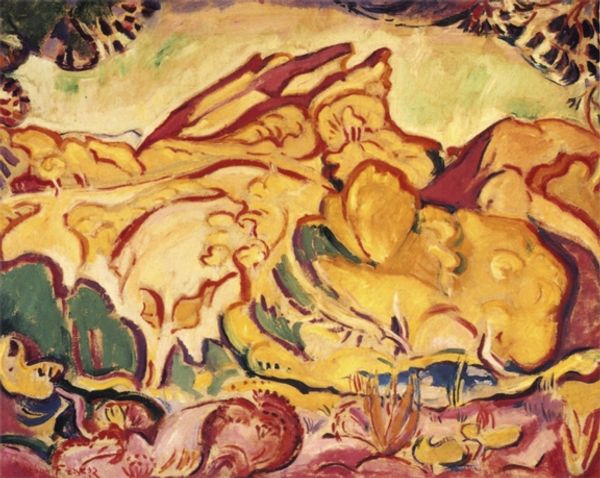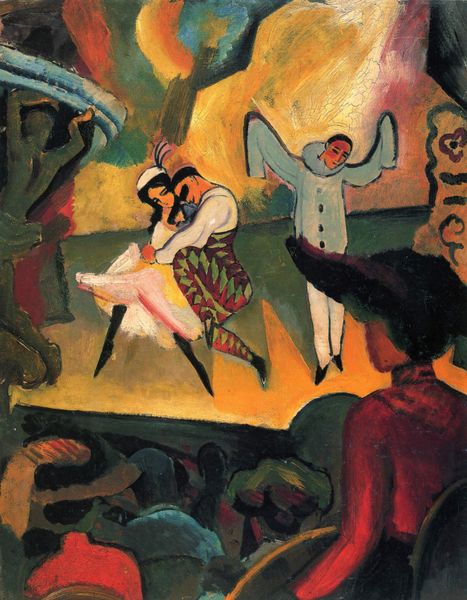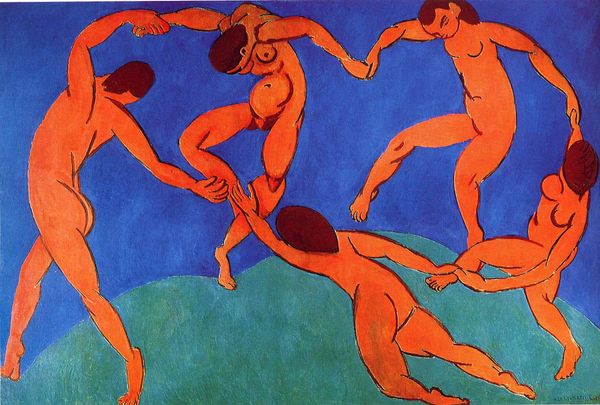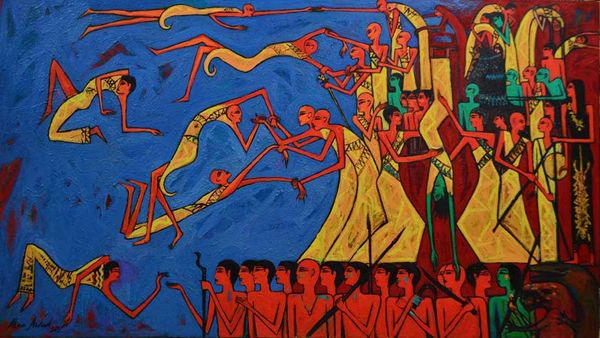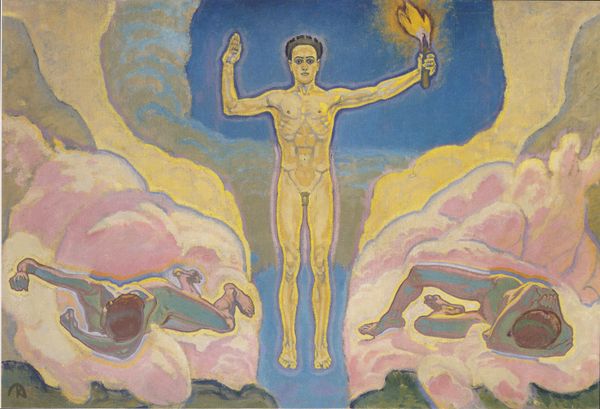
painting, oil-paint
#
fauvism
#
fauvism
#
painting
#
oil-paint
#
landscape
#
figuration
#
history-painting
Dimensions: 175 x 225 cm
Copyright: Public domain US
Curator: Looking at André Derain’s "The Dance," painted in 1906 using oil, you’re immediately struck by its use of raw, unblended color. How does it strike you, initially? Editor: Raw is right. It feels untamed, almost primal. The colors are so bold they vibrate. It's like a dream – vibrant but slightly unsettling. It's also unexpectedly grand. Is this considered Fauvism at its finest? Curator: Indeed. Its scale certainly challenges any notions of casual sketch. We can consider Derain's radical simplification and use of arbitrary colour, freeing the form from naturalistic representation, reflecting the wider social upheavals around production in this era. The Fauvist use of industrial paints, boldly and directly applied, allowed artists to flatten depth and reject traditional painting methods of laborious mixing and glazing techniques used to represent academic realism. It allowed production of more works and perhaps sought a wider audience? Editor: Production echoes the freedom and immediacy. This explains its energy, as well. Like the materials and process infused it into the subject of 'dance' in a liberating act. Does Derain draw from anything specific when he made this? Curator: Possibly. Its themes resonate with emerging anthropological interests and primitive art. Artists were not only fascinated by non-Western art forms but also began appropriating their stylistic and thematic elements, so the notion of purity or primal impulse comes in a specific socio-historical frame here. The intense colors, the figures, and the abstracted snake, are deliberately referencing othering techniques as well. This could signal what lies underneath, with this sense of "dance" perhaps is meant to evoke something more primordial. Editor: Ah, I see what you mean now about challenging boundaries of art vs. craft. By pushing the rawness, simplifying forms to their bare essence. Curator: Precisely, and this challenged traditional academic hierarchies while reflecting changing social perspectives on artistic creation and the 'primitive'. It moves the making process right to the forefront for an audience now. Editor: Which, if you think about it, is brave. What a wonderfully defiant statement! Curator: Absolutely, this dance between social observation, material means and artistic process makes for an enduring piece of art history, and makes me want to find the source of the materials for more historical fact-checking. Editor: A painting that still makes you want to move! Its still fascinating how many meanings that it brings to you now. Thanks for pointing this out!
Comments
No comments
Be the first to comment and join the conversation on the ultimate creative platform.
